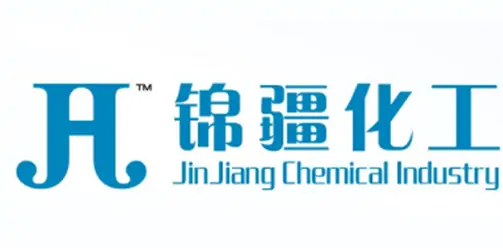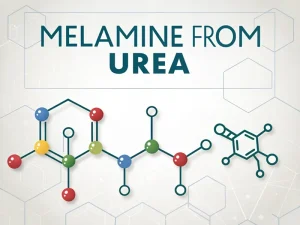
Urea VS Anhydrous Ammonia
Tech Blog urea vs anhydrous ammonia Nitrogen is the “lifeline” of crop growth, directly affecting leaf development, photosynthetic efficiency, and yield potential. For global farmers,

The chemical formula of urea is CO (NH2)2, a nitrogen-rich nitrogen-rich compound widely used in agriculture, industry, medicine, and skin care industries. Suppose you are searching for types of urea.
In this article will answer your questions and delve into its unique properties and how they are applied in different industries.
According to its composition, urea can be divided into ordinary urea, slow-release urea, coated urea, and trace element urea.
Similarly, according to their applications, urea can be divided into agricultural urea, industrial grade urea, automotive grade urea, and pharmaceutical and cosmetic grade urea.
Ordinary urea has a higher nitrogen content, with qualified products requiring a nitrogen content of 46.0%, first-class products requiring a nitrogen content of 46.2%, and superior products requiring a nitrogen content of 46.4%.
Particle size: There are mainly two types, prilled urea (1 to 3 mm) and granular urea (2.8 and 4.75 mm).
Advantages: High solubility, quick acting, suitable for most crops.
Urea treated with slow-release technology is called slow-release urea.
By using physical or chemical treatment methods, the rate of urea release or decomposition into ammonia is reduced without changing the chemical structure of urea itself. The synchronization between ammonia production rate and utilization rate is enhanced, thereby improving the utilization efficiency of urea.
Advantages: Slow-release urea is designed to reduce nitrogen loss and is suitable for long-term fertilization needs. The fertilizer efficiency is generally between 80 and 120 days.
Slow-release urea is used in animal feed because it can slowly release nitrogen elements to match the growth needs of animals, improve feed utilization efficiency, and enhance animal growth performance.

There are mainly sulfur-coated urea and resin-coated urea.
Sulfur coated urea generally has a nitrogen content of 36-37%.
Resin-coated urea has a nitrogen content of 38-42%.
It belongs to inorganic-coated slow-release fertilizers.
Advantages: The fertilizer efficiency is generally between 80 and 120 days.It is mainly used as a raw material for controlling nitrogen release in the production of controlled-release mixed fertilizers. It is suitable for long-term nitrogen-demanding crops such as sugarcane and fruit trees.
Including elemental trace urea and multi-element trace element urea, the former contains elements such as zinc, copper, iron, manganese, and boron. At the same time, the latter is a multi-element micro fertilizer urea complex prepared by melting these elements with urea.
Agricultural urea is the most common type, accounting for over 50% of global nitrogen fertilizer consumption.
Advantage:
Nitrogen content: usually 46% by weight, highest in solid nitrogen fertilizers.
Water solubility: High solubility, which plant roots can quickly absorb.
PH neutral: Proper application will not significantly change the soil pH value.
Disadvantages:
Volatile (nitrogen is lost up to 30% in ammonia).
Application:
Crop Fertilization: Used for planting rice, wheat, and corn to increase yield.
Animal feed: as a protein substitute in the diet of ruminant animals such as cattle and sheep.
Soil improvement: Improving soil fertility by supplementing nitrogen levels.
Industrial urea (purity ≥ 99.5%) is used as a raw material for chemical synthesis.
Application:
Resin production: Used for manufacturing urea formaldehyde resin and melamine resin, the resin is widely used in wood adhesives, heat-resistant and water-resistant plastic products, etc.
Plastic production: Reacts with formaldehyde to produce urea formaldehyde plastic, which is used for electrical switches, tableware, etc.
Chemical raw materials: high-temperature decomposition produces melamine and cyanuric acid, which are used to manufacture flame retardants, plastics, disinfectants, etc.
Textile industry: as an additive to improve dye absorption and fixation effect.
Other applications: such as snow melting agents, cement additives, etc
Automotive grade urea is an essential additive for selective catalytic reduction (SCR), which reduces nitrogen oxide pollution in diesel exhaust. Its composition consists of 32.5% high-purity urea and 67.5% deionized water.
Also known as DEF urea, when nitrogen oxides are detected in the exhaust pipe, the urea tank automatically sprays diesel exhaust treatment fluid. The diesel exhaust treatment fluid and nitrogen oxides undergo oxidation-reduction reactions in the SCR catalytic reaction tank, generating pollution-free nitrogen gas and water vapour for discharge.
Pharmaceutical grade: Purity ≥ 99.9%, free of urea and heavy metals.
Application:
Dermatology: Moisturizing cream (such as psoriasis urea cream).
Diuretics: Inject urea to reduce intracranial pressure.
Cosmetics urea:
Application:
The moisturizing agent in lotion can improve skin hydration.
| Classification | Type | Nitrogen Content/Purity | Characteristics | Advantages |
| Regular Urea | Regular Urea | 46.0%–46.4% | Small particles (1–2mm) or large particles (2–4mm), highly soluble. | Fast-acting, suitable for most crops. |
| Slow-Release Urea | Slow-Release Urea | 46% | Urease inhibitor added, fertilizer effect lasts 80–120 days. | Reduces nitrogen loss, improves efficiency. |
| Coated Urea | Sulfur-Coated Urea | 36%–37% | Inorganic coating, fertilizer effect 80–120 days. | Precise nitrogen release, eco-friendly. |
| Resin-Coated Urea | 38%–42% | Organic coating, customizable release rate. | Adjustable release, reduces leaching. | |
| Micronutrient Urea | Single/Multi-Micronutrient Urea | 46% + trace elements | Contains Zn, Cu, Fe, Mn, B, etc., co-melted with urea. | Supplies nitrogen and micronutrients for improved yield and quality. |
| Classification | Purity/Composition | Characteristics | Applications |
| Agricultural Urea | 46% | High solubility, pH-neutral. | Field crops (rice, corn), animal feed, soil amendment. |
| Industrial Urea | ≥99.5% | High purity, stable chemical properties. | Resin production (urea-formaldehyde, melamine), plastics, textiles, paper, deicers. |
| Automotive Grade Urea | 32.5% urea + 67.5% deionized water | High purity, specialized for SCR systems. | Diesel vehicle exhaust treatment. |
| Pharmaceutical Grade Urea | ≥99.9% | Free of biuret and heavy metals. | Dermatology (moisturizers), diuretic injections. |
| Cosmetic Grade Urea | High purity | Humectant to improve skin hydration. | Skincare products (lotions, creams). |
The multifunctionality of urea makes it the cornerstone of modern agriculture and industry. Whether used as fertilizer, industrial or medical, understanding the most suitable type of urea for your needs can ensure its application has better efficiency, sustainability and effectiveness.
If you want to purchase different types of urea, please get in touch with our experts for tailored advice!

Tech Blog urea vs anhydrous ammonia Nitrogen is the “lifeline” of crop growth, directly affecting leaf development, photosynthetic efficiency, and yield potential. For global farmers,

Tech Blog melamine from urea Melamine is well-known for its wide range of applications, but its raw material for production is surprisingly urea. For manufacturers,

Tech Blog physical and chemical properties of urea Urea, with the chemical formula CO(NH2)2, is a simple organic compound that plays a central role in

JINGJIANG MELAMINE POWDER
© JINJIANG MELAMINE